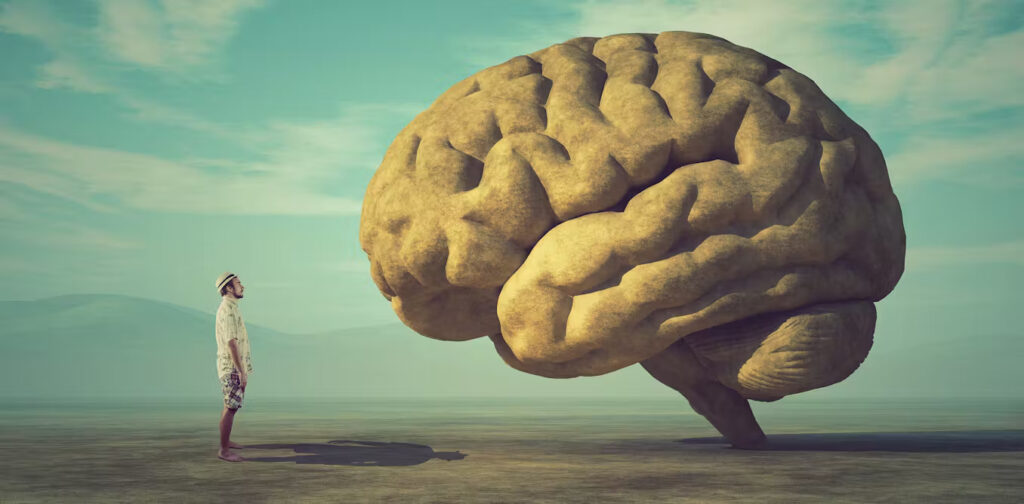Table of Contents
ToggleTop 10 Unknown and Amazing Facts About the Brain
One of the body’s most intricate and fascinating organs, the human brain is in charge of our memories, thoughts, feelings, and behaviors. Even after centuries of research, scientists continue to learn startling new facts about the brain.

In order to unravel the secrets of the mind, this article will explore ten fascinating but little-known facets of the brain.
1. The Brain’s Energy Consumption: A Powerhouse of Activity
Despite making up only 2% of the body’s weight, the brain uses an astounding 20% of its energy. The brain uses a lot of energy because it is constantly active, even when we are not moving. Neurons in the brain are constantly processing information, keeping the body functioning, and firing. Action potentials, which are electrical impulses that neurons fire, are the main source of this energy use in electrical signaling. Since glucose is carried by the blood to the brain, changes in blood sugar levels can have a significant impact on the brain’s energy requirements.
2. Neuroplasticity: The Brain’s Ability to Rewire Itself
The brain’s neuroplasticity—the capacity of the brain to alter and adapt over the course of a person’s life—is one of its most amazing characteristics. The brain may rearrange itself by creating new neural connections, thanks to neuroplasticity. This flexibility is essential for memory, learning, and brain injury repair.
For instance, the brain can rewire itself following a stroke to make up for lost functions by assigning tasks previously controlled by the injured sections of the brain to other parts of the brain. This adaptability is essential to learning and memory and extends beyond the confines of healing.
3. The Brain’s Communication Network: Synapses and Neurotransmitters
There are over 86 billion neurons in the human brain, and these neurons are linked to thousands of other neurons by connections known as synapses. Through the extensive communication network created by these synaptic connections, neurons are able to communicate with one another through the use of substances called neurotransmitters. Signals in the brain’s communication system may travel up to 268 miles per hour, demonstrating how rapid it is.
Neurotransmitters are essential for controlling mood, appetite, sleep patterns, and a host of other bodily processes. For instance, dopamine is linked to reward and pleasure, whereas serotonin is involved in mood regulation. Anxiety and sadness are two examples of the mental health conditions that can result from imbalances in neurotransmitter levels.
4. The Mystery of Consciousness: The Brain’s Greatest Enigma
One of the most deep and enigmatic features of the human brain is consciousness. The precise nature of consciousness—how it develops from brain activity and what it comprises—remains largely unknown despite advancements in neuroscience. Being cognizant of one’s own existence, thoughts, and environment is the condition of consciousness.
Although the prefrontal cortex and other brain regions are known to be involved in conscious thought, scientists are still unsure of how subjective experiences develop from neuronal processes. While some theories contend that consciousness may include quantum processes, others claim that it may result from intricate interactions between various brain regions.
5. The Brain’s Storage Capacity: A Vast and Limitless Memory
Another fascinating aspect of the brain is its memory. The brain is thought to have a storage capacity of up to 2.5 petabytes, or a million gigabytes, of data, or three million hours of television. The brain’s capacity to create and maintain a massive number of neural connections accounts for this enormous storage capacity.
The brain stores memories throughout several parts of the brain, unlike a computer, which stores information in a single spot. For instance, the amygdala is engaged in emotional memories, whereas the hippocampus is essential in the formation and retrieval of memories. The brain’s extraordinary complexity is demonstrated by its enormous capacity for information storage and retrieval.

6. The Brain’s Role in Emotional Regulation: The Limbic System
Emotion regulation mostly comes from a complex network of structures deep within the brain called the limbic system. The thalamus, hypothalamus, hippocampus, and amygdala are the parts of this system that collaborate to interpret and react to emotional cues.
In particular, the amygdala plays a critical role in both the recognition of emotional cues and the production of emotional reactions. It is important for the development of emotional memories as well as for fear and aggression. The prefrontal cortex, which is involved in impulse control and decision-making, and the limbic system are closely connected, which enables us to control our emotions and react appropriately in a variety of situations.
7. The Brain’s Sleep Cycles: More Than Just Rest
Sleep is not only a passive condition of rest; it is crucial for brain activity. The brain goes through a number of important functions that are essential for preserving cognitive function while we sleep. The stages of sleep that the brain cycles through are rapid eye movement (REM) and non-REM sleep. Every level has a distinct function. For example, REM sleep is linked to vivid dreams and is essential for learning, regulating emotions, and consolidating memories.
On the other hand, non-REM sleep is crucial for energy conservation and physical recovery. Sleep is essential for brain health because it increases the activity of the brain’s lymphatic system, which removes waste and poisons.
8. The Brain’s Immune System: A Defense Mechanism Within
The central nervous system (CNS) immune response is the specific immune system that the brain possesses. Glial cells known as microglia serve as the brain’s first line of defense against pathogens and trauma. These cells scour the brain continuously for indications of injury or intruders from outside the body. Microglia become activated and initiate an immune response to safeguard the brain when they perceive a threat.
In addition to their immunological tasks, microglia also play a role in clearing away debris, maintaining synaptic connections, and supporting neuroplasticity. However, an overactive microglial response has been related to neurodegenerative illnesses such as Alzheimer’s and Parkinson’s, underscoring the delicate balance of the brain’s immune system.
9. The Brain-Gut Connection: A Two-Way Communication System
The gut-brain axis is a communication network that establishes a close connection between the gut and the brain. The vagus nerve, which is one of the direct and indirect channels involved in this link, is responsible for sending signals from the gut to the brain.
The enteric nervous system, which makes up the gut, is a network of neurons that can operate independently of the brain, which is why it’s sometimes referred to as the “second brain.” The regulation of digestion, mood, and immunological function is significantly influenced by the gut-brain axis.
For instance, the trillions of microbes that make up the gut microbiome have the ability to affect behavior and brain function by producing neurotransmitters and other signaling molecules. Unbalances in the gut microbiome have been so strongly associated with mental health conditions including sadness and anxiety.
10. The Brain’s Aging Process: How the Brain Changes Over Time
The brain changes in a number of ways as we age, and these changes can impact cognitive performance. One of these alterations is a decrease in the volume of the brain, especially in the areas responsible for memory and executive function—the prefrontal cortex and the hippocampus.
Furthermore, there is a decrease in the number of synapses and a decrease in the synthesis of neurotransmitters like serotonin and dopamine. Age-related cognitive decline, including memory loss and diminished problem-solving skills, may result from these alterations.
Nonetheless, studies have indicated that a few lifestyle choices, such as consistent physical activity, a balanced diet, and mental stimulation, can help protect brain function and lower the chance of neurodegenerative illnesses. The aging brain is also influenced by neuroplasticity, which enables older people to keep learning and growing as they face new obstacles.
Conclusion
The human brain is an amazing organ that can do amazing feats of emotion, memory, and adaptability. Even after centuries of study, there is still plenty to discover about the inner workings of the brain.
The ten undiscovered facts this article explores provide only a small taste of the intricacy of the brain and the continuous search for answers. We may anticipate much more exciting discoveries about the brain as neuroscience develops, which will broaden our comprehension of what it means to be human. The brain is resilient, as evidenced by its capacity for learning, adaptability, and healing, which emphasizes the significance of preserving brain health throughout our lives.

